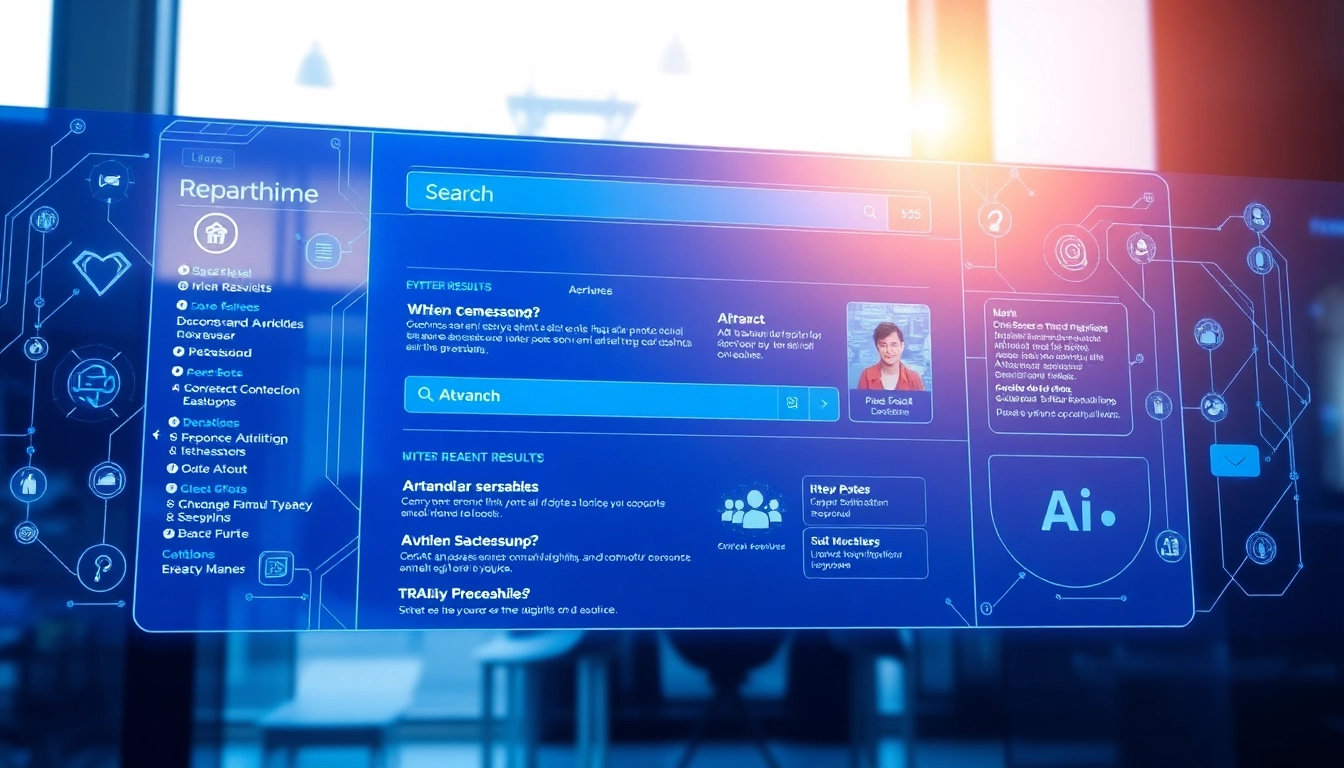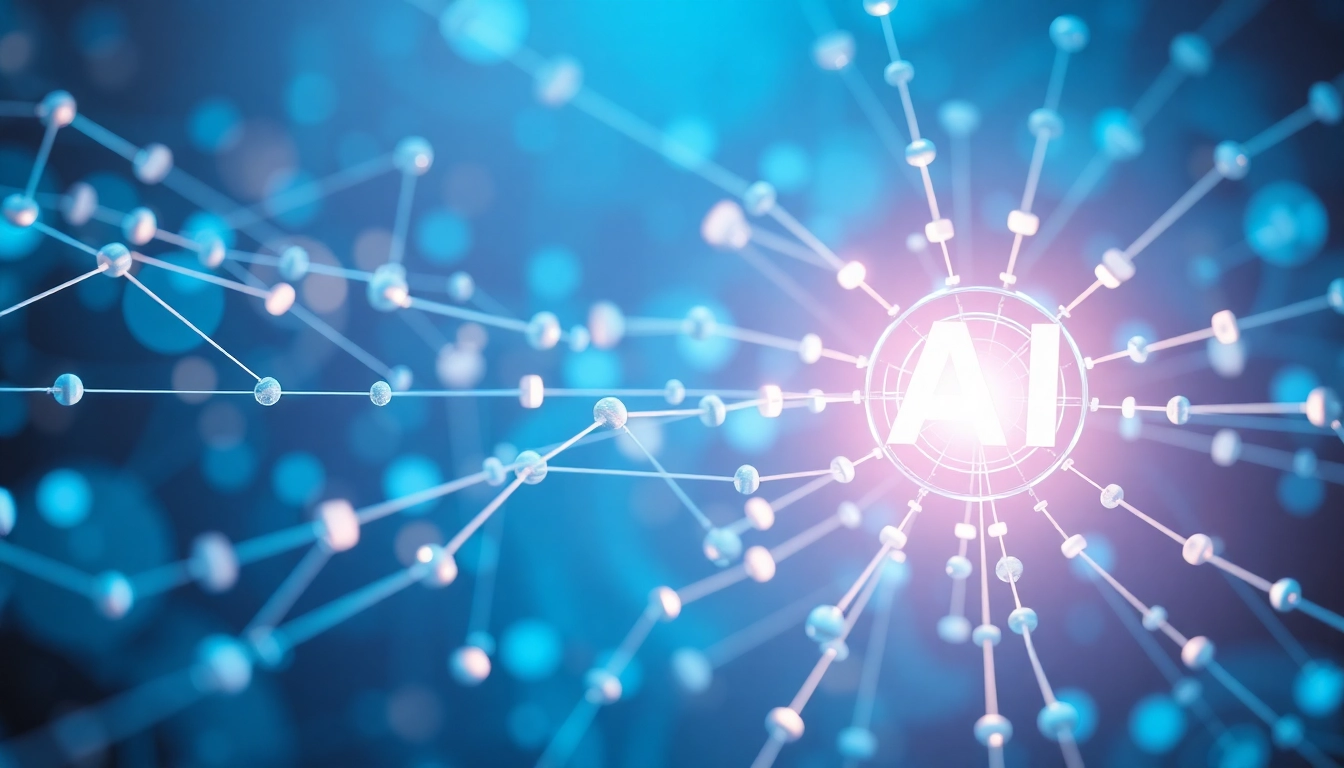1. What is Agentic AI?
In an era defined by rapid technological advancements, the term Agentic AI has emerged as a significant concept within the artificial intelligence landscape. Agentic AI refers to systems designed to autonomously make decisions and take actions to achieve specific objectives, often without the need for constant human guidance. This capability hinges not only on automated execution of tasks but also on sophisticated reasoning and iterative planning to solve complex, multi-step problems.
1.1 Definition and Characteristics
At its core, Agentic AI encapsulates a broad range of functionalities that enable machines to operate in a human-like manner, utilizing data patterns and contextual awareness to make independent decisions. The essential characteristics of Agentic AI include:
- Autonomy: The ability to operate independently, making decisions based on real-time data analysis.
- Adaptability: The capacity to learn from interactions, adapting strategies to address evolving challenges or goals.
- Complex Problem Solving: Employing advanced algorithms and machine learning techniques to tackle multi-faceted issues.
- Goal-Oriented Behavior: Systems designed to pursue defined objectives with a strategic approach, further elevating their efficiency.
1.2 How Agentic AI Differs from Other AI Types
To understand Agentic AI effectively, it’s imperative to juxtapose it against other prevalent forms of artificial intelligence. Unlike generative AI, which primarily focuses on content creation—like generating text, images, or music—Agentic AI emphasizes action and outcome. While generative AI responds to human prompts to deliver outputs, Agentic AI proactively resolves challenges and fulfills tasks. This distinction places Agentic AI at the forefront of transformative applications across diverse sectors, where decision automation can lead to significant efficiency gains.
1.3 Key Components of Agentic AI Systems
The functionality of Agentic AI systems can be attributed to several key components:
- Machine Learning Algorithms: These enable the system to analyze data, recognize patterns, and improve its decision-making over time through training.
- Data Inputs: Real-time data feeds, from sensors and databases, provide context critical for autonomous functioning.
- Interface for Interaction: User interfaces allow humans to set goals and monitor AI performance without needing deep technical knowledge.
- Feedback Mechanisms: Systems that incorporate feedback loops enhance learning by refining strategies based on outcomes.
2. Applications of Agentic AI in Various Industries
The versatility of Agentic AI applications spans across numerous industries, revolutionizing traditional practices through enhanced automation and decision-making capabilities. Below are several key industries where Agentic AI is making significant contributions.
2.1 Agentic AI in Healthcare
The healthcare industry has been one of the frontrunners in adapting Agentic AI technologies, primarily due to the need for rapid diagnosis, treatment planning, and patient management. Agentic AI systems can analyze patient data, recommend treatment options, and monitor post-treatment outcomes autonomously.
For instance, AI algorithms are deployed in diagnostic imaging, enabling machines to interpret X-rays and MRIs with high accuracy, often surpassing human capabilities. Such applications not only streamline processes but also reduce the potential for human error, thereby enhancing patient care quality.
2.2 Use Cases in Finance
The financial sector has increasingly turned to Agentic AI to optimize operations, risk management, and customer engagement. Financial institutions utilize these systems to automate trading strategies, detect fraudulent activities, and tailor personalized banking solutions for clients.
An outstanding example is algorithmic trading, where AI systems make trading decisions based on market conditions, performing transactions faster than any human trader could. These applications significantly enhance profitability while also improving regulatory compliance by better monitoring transactions.
2.3 Impacts on Manufacturing Automation
Automation in manufacturing has reached new heights through the implementation of Agentic AI. Factories are increasingly relying on AI-driven systems to monitor production processes, manage supply chains, and even optimize inventory levels through predictive analytics.
Real-time adjustments to manufacturing workflows, driven by AI insights, can improve efficiency and reduce downtime. For instance, predictive maintenance powered by Agentic AI can foresee machinery failures before they happen, minimizing costly disruptions.
3. The Mechanisms of Decision Making in Agentic AI
The decision-making processes employed by Agentic AI systems are intricate and multifaceted. Several layers of analysis are involved, which collectively enhance their operational effectiveness. Below, we delve into the mechanisms that underpin these systems.
3.1 Data Processing and Analysis
Fundamental to any AI system is its ability to process and analyze vast amounts of data. Agentic AI excels in identifying patterns and correlations within complex datasets, which informs its decision-making processes.
This processing often involves the use of advanced statistical techniques and model training on historical data, enabling the AI to forecast future trends and outcomes. For instance, in the context of retail, Agentic AI can analyze customer purchase history to tailor marketing efforts, ultimately boosting sales conversions.
3.2 Learning and Adaptation Processes
Learning is a continuous process for Agentic AI systems. They employ various methods, such as supervised learning, unsupervised learning, and reinforcement learning, to adapt their functions over time.
In supervised learning, for example, the AI is trained using labeled datasets where the correct outputs are known, allowing it to learn associations and make predictions. Unsupervised learning, on the other hand, involves finding hidden patterns in data without predefined labels. Ultimately, these learning processes enable systems to adaptively improve upon their performance as more data becomes available and project conditions evolve.
3.3 Ethical Considerations in Autonomous Decisions
As Agentic AI systems gain capabilities in autonomous decision-making, ethical considerations come to the forefront. Issues such as bias in data, accountability for decisions, and transparency of operations necessitate comprehensive frameworks to ensure responsible use.
For example, if an AI system makes a decision that results in a negative outcome—like rejecting a loan application—questions arise regarding which data influenced that decision and whether biases in the training data led to an unfair outcome. Addressing these ethical implications is crucial for fostering trust and ensuring the sustainable deployment of Agentic AI technologies in society.
4. Challenges and Limitations of Agentic AI
Despite its promising capabilities, Agentic AI faces several challenges and limitations that can impede its growth and effectiveness. Below are some of the most pressing issues experienced in the deployment of these systems.
4.1 Technical Limitations and Reliability
One of the primary challenges impacting Agentic AI is the reliability of its algorithms. Insufficient training data or poorly designed models can lead to inaccurate predictions, which may undermine confidence in AI systems.
Additionally, technical issues such as system failures or software bugs can result in operational downtime or performance inconsistencies. The dependence on robust data infrastructures and continuous monitoring solutions is essential to mitigate these risks and ensure smooth operations.
4.2 Societal Impacts and Concerns
The proliferation of Agentic AI raises critical societal concerns regarding employment, data privacy, and security. The automation of tasks previously performed by humans can lead to job displacement and require shifts in workforce reskilling.
Furthermore, as these systems handle increasingly sensitive data, safeguarding personal information becomes paramount. Balancing innovation with social responsibility is a challenge that organizations must confront proactively.
4.3 Regulatory and Compliance Issues
As regulatory frameworks struggle to keep pace with rapid technological advancements, compliance becomes a daunting challenge for organizations implementing Agentic AI. Vague regulations can create uncertainty and delay the deployment of AI tools compliant with legal standards.
Organizations must stay vigilant, adopting best practices that meet existing regulations while engaging in advocacy for clear, practical laws governing AI applications. By doing so, they can harness the full potential of these technologies while mitigating legal risks.
5. The Future of Agentic AI
As we gaze into the future, the trajectory of Agentic AI appears promising, with several emerging trends and innovations poised to shape its development. Herein, we explore what the future may hold for this dynamic field.
5.1 Emerging Trends and Innovations
The increasing integration of Agentic AI with other technologies, such as blockchain and the Internet of Things (IoT), heralds a new chapter in operational efficiency. By combining these technologies, organizations can create robust ecosystems that leverage the strengths of each component.
For example, blockchain can enhance the security and transparency of data manipulated by AI systems, while IoT devices can provide real-time data streams necessary for informed decision-making. The convergence of these technologies will facilitate innovative applications across various domains, leading to more autonomous decentralized systems.
5.2 Predictions for Agentic AI Development
Experts predict that the development of Agentic AI will continue to accelerate, propelled by advancements in computational power and availability of massive datasets. AI will gain further sophistication, enabling even more nuanced decision-making capabilities and broadening the scope of tasks it can autonomously perform.
Furthermore, regulatory frameworks are expected to evolve, providing clearer guidelines on deployment, ethics, and accountability—thereby nurturing a conducive environment for responsible innovation.
5.3 Preparing for an Agentic AI-Driven World
As organizations brace for the impacts of Agentic AI, strategic preparation becomes crucial. Prioritizing workforce training will be essential for equipping employees with the skills necessary to thrive alongside AI systems.
Additionally, fostering a culture of digital literacy and adaptability, where human-AI collaboration is encouraged, will be vital in maximizing the benefits of Agentic AI technologies while minimizing potential drawbacks. Continuous evaluation and adjustment of strategies will enable organizations to harness the evolving landscape of AI effectively.










Leave a Reply